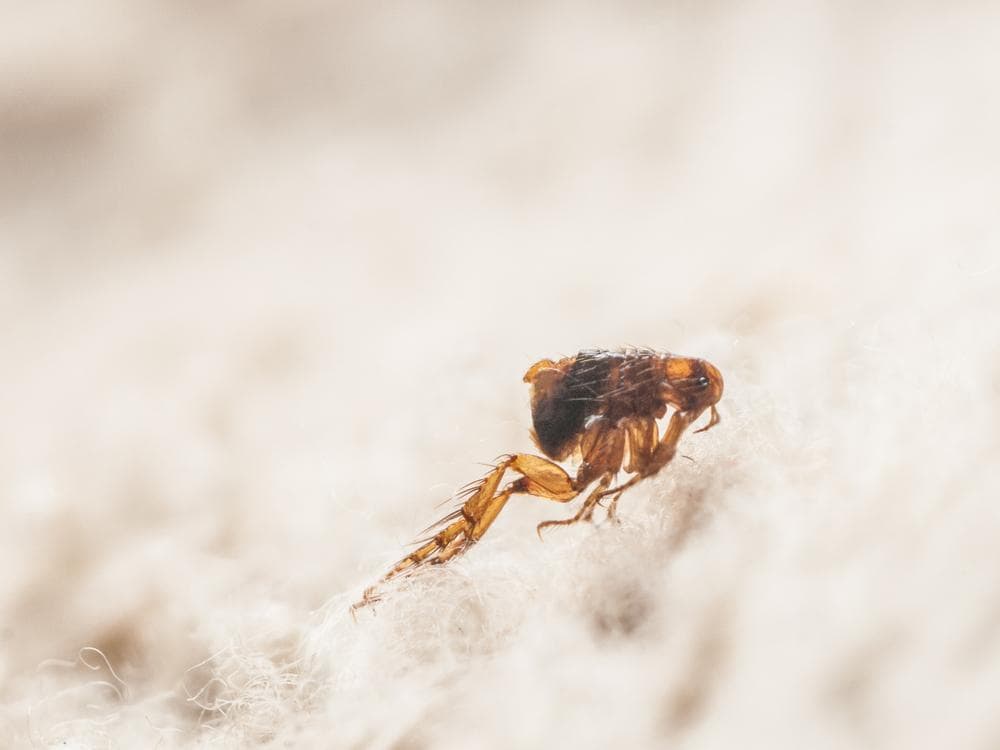
Fleas are one of the most common and annoying pests that can infest your dog. While they are typically found on a dog’s body, they can occasionally make their way into your dog’s ears, causing discomfort and potential health risks. In this comprehensive guide, we’ll walk you through the steps to remove fleas from your dog’s ears and prevent future infestations.
To remove fleas from a dog’s ears, start by bathing your dog with a commercial flea bath, powder, or a peppermint-scented soap. Then, gently clean the insides of the dog’s ears with a commercial ear cleaner and a cotton ball. Apply a commercial topical flea treatment or food-grade diatomaceous earth. Eradicate fleas from your home by washing all soft items in hot, soapy water. Finally, consult with your vet for an appropriate flea prevention method to prevent future infestations.
Identifying the Problem
Before you can treat the issue, you need to identify it. The initial signs that your dog might have fleas in its ears include constant scratching, head shaking, severe itching, biting and chewing at the skin, hair loss, scabs, and red, irritated skin.
Inspection and Verification
To safely inspect a dog’s ears for fleas, make sure your dog is calm and comfortable. Choose a quiet, well-lit area to perform the inspection. Gently lift the ear flap and examine the outer ear for any signs of fleas, such as small, reddish-brown insects or flea dirt (black pepper-like flakes). Use a flea comb to gently comb through the fur around the ears, paying particular attention to the base of the ears, neck, and head.
The Removal Process
To effectively remove fleas from a dog’s ears, follow these steps:
- Bathe your dog: Start by giving your dog a bath using a commercial flea bath, powder, or a castille-based peppermint-scented soap. This will help remove fleas from the rest of your dog’s body.
- Clean the ears: Gently clean the insides of your dog’s ears with a commercial ear cleaner and a cotton ball. Be careful not to push the cotton ball too deep into the ear canal.
- Apply topical flea treatment: After cleaning the ears, apply a commercial topical flea agent, like Frontline, to start killing fleas right away. If you prefer a natural remedy, use food-grade diatomaceous earth.
- Eliminate fleas in your home: Wash all soft items such as bedding (both human and dog beds), pillows, and blankets in hot, soapy water. You may need to repeat the process or use an indoor flea fogger to ensure total eradication.
- Consult your veterinarian: Once the problem is taken care of, ask your vet about an appropriate flea prevention method, such as a collar, topical ointments, or powders, to prevent future infestations.
Prevention is Key
To prevent fleas from infesting your dog’s ears in the future, regular grooming, use of flea prevention products, keeping your dog’s environment clean, using natural remedies, regular ear cleaning, and monitoring for signs of fleas are all recommended.
The Risks of Untreated Flea Infestations
If a dog’s ear flea infestation is left untreated, it can lead to several potential health risks. These include Flea Allergy Dermatitis (FAD), tapeworms, anemia, Bartonellosis, ear infections, and secondary skin infections.
Seeking Professional Help
If you notice any symptoms such as flea dirt, itching, hair loss, ear inflammation, debris in the ear canal, and persistent head shaking, consult your veterinarian for appropriate treatment.
Effective Flea Treatments
There are several safe and effective flea treatments for dogs, including oral medications, topical treatments, and flea collars. Always consult with your veterinarian before starting any flea treatment to ensure it is appropriate for your dog’s age, breed, and health condition.
In conclusion, removing fleas from a dog’s ears requires patience and diligence, but with the right tools and techniques, you can keep your furry friend comfortable and flea-free. Remember, prevention is always better than cure, so keep up with regular grooming and use flea prevention products to keep fleas at bay.
Frequently Asked Questions
What is Flea Allergy Dermatitis (FAD)?
Flea Allergy Dermatitis (FAD) is a skin condition caused by an allergic reaction to flea saliva. When a flea bites a dog, it injects saliva into the skin. Dogs who are allergic to flea saliva can suffer from intense itching, skin inflammation, and secondary skin infections.
How often should I clean my dog’s ears to prevent flea infestations?
Depending on the breed and health of your dog, you should clean their ears at least once every two weeks. Dogs with long ears or those prone to ear infections may require more frequent cleaning. Always consult with your veterinarian for personalized advice.
Can I use human products to remove the fleas from my dog’s ears?
No, it’s not recommended to use human products to remove fleas from your dog’s ears. Human products might be too harsh for your dog’s skin and could cause irritation or other health issues. Always use products specifically designed for dogs.
What do I do if my dog has an adverse reaction to the flea treatment?
If your dog has an adverse reaction to a flea treatment, such as vomiting, lethargy, or skin irritation, you should immediately contact your veterinarian for advice.
Are there natural remedies for flea infestations?
Yes, there are natural remedies that can help with flea infestations. For instance, food-grade diatomaceous earth is a natural powder that can kill fleas by dehydrating them. However, these remedies might not be as effective as commercial flea treatments. Always consult with your vet before using natural remedies.
How long does it take to remove fleas from a dog’s ears?
The process of removing fleas from a dog’s ears can vary based on the severity of the infestation. In mild cases, it might take a few days to a week. In severe cases, it could take several weeks to completely eradicate the fleas. It’s important to continue treatment as recommended by your vet to ensure all fleas are eliminated.










